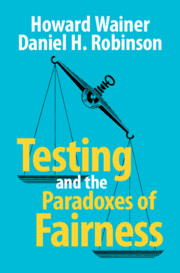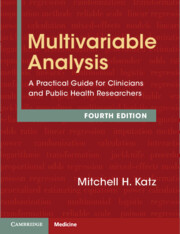Refine search
Actions for selected content:
52341 results in Statistics and Probability
The asymptotic shape of the branching random walk – CORRIGENDUM
-
- Journal:
- Advances in Applied Probability , First View
- Published online by Cambridge University Press:
- 16 October 2025, p. 1
-
- Article
-
- You have access
- HTML
- Export citation
International practices in climate transition plan reporting: lost in translation?
-
- Journal:
- British Actuarial Journal / Volume 30 / 2025
- Published online by Cambridge University Press:
- 14 October 2025, e28
-
- Article
-
- You have access
- Open access
- HTML
- Export citation
Consumer utility and fair profit margins in insurance
-
- Journal:
- British Actuarial Journal / Volume 30 / 2025
- Published online by Cambridge University Press:
- 14 October 2025, e29
-
- Article
-
- You have access
- Open access
- HTML
- Export citation
YouthView: a platform for interactive visualizations to explore youth disadvantage
-
- Journal:
- Data & Policy / Volume 7 / 2025
- Published online by Cambridge University Press:
- 13 October 2025, e69
-
- Article
-
- You have access
- Open access
- HTML
- Export citation
Random embeddings of bounded-degree trees with optimal spread
- Part of
-
- Journal:
- Combinatorics, Probability and Computing , First View
- Published online by Cambridge University Press:
- 13 October 2025, pp. 1-12
-
- Article
-
- You have access
- Open access
- HTML
- Export citation
Mean-field interacting systems with sequential coalescence at future ensemble averages
-
- Journal:
- Journal of Applied Probability , First View
- Published online by Cambridge University Press:
- 13 October 2025, pp. 1-34
-
- Article
-
- You have access
- Open access
- HTML
- Export citation
Extremes of Gaussian random fields with nonadditive dependence structure
- Part of
-
- Journal:
- Advances in Applied Probability , First View
- Published online by Cambridge University Press:
- 13 October 2025, pp. 1-35
-
- Article
-
- You have access
- Open access
- HTML
- Export citation
Evaluating and benchmarking data-driven performance forecasting techniques for infrastructure asset management
-
- Journal:
- Data-Centric Engineering / Volume 6 / 2025
- Published online by Cambridge University Press:
- 13 October 2025, e49
-
- Article
-
- You have access
- Open access
- HTML
- Export citation

Testing and the Paradoxes of Fairness
-
- Published online:
- 10 October 2025
- Print publication:
- 30 October 2025
Social determinants and community-level risk factors in CA-MRSA transmission among disadvantaged populations in North America: A scoping review
-
- Journal:
- Epidemiology & Infection / Volume 153 / 2025
- Published online by Cambridge University Press:
- 10 October 2025, e126
-
- Article
-
- You have access
- Open access
- HTML
- Export citation
Algorithmic regulation at the city level in China—ERRATUM
-
- Journal:
- Data & Policy / Volume 7 / 2025
- Published online by Cambridge University Press:
- 10 October 2025, e68
-
- Article
-
- You have access
- Open access
- HTML
- Export citation
Beyond the broken tetrahedron
- Part of
-
- Journal:
- Combinatorics, Probability and Computing , First View
- Published online by Cambridge University Press:
- 10 October 2025, pp. 1-12
-
- Article
- Export citation
Rift Valley fever seroprevalence in ruminants in Dhobley town, Lower Juba region, Somalia, in 2021
-
- Journal:
- Epidemiology & Infection / Volume 153 / 2025
- Published online by Cambridge University Press:
- 10 October 2025, e122
-
- Article
-
- You have access
- Open access
- HTML
- Export citation

Multivariable Analysis
- A Practical Guide for Clinicians and Public Health Researchers
-
- Published online:
- 09 October 2025
- Print publication:
- 23 October 2025
Enhanced upper confidence limits via randomized tests in random sampling without replacement
- Part of
-
- Journal:
- Advances in Applied Probability , First View
- Published online by Cambridge University Press:
- 09 October 2025, pp. 1-51
-
- Article
- Export citation
Uniqueness of locally stable Gibbs point processes via spatial birth–death dynamics
- Part of
-
- Journal:
- Advances in Applied Probability , First View
- Published online by Cambridge University Press:
- 09 October 2025, pp. 1-36
-
- Article
- Export citation
Estimation of on- and off-time distributions in a dynamic Erdős–Rényi random graph
- Part of
-
- Journal:
- Advances in Applied Probability , First View
- Published online by Cambridge University Press:
- 09 October 2025, pp. 1-30
-
- Article
- Export citation
Comparison on the criticality parameters for two supercritical branching processes with immigration in random environments
-
- Journal:
- Probability in the Engineering and Informational Sciences , First View
- Published online by Cambridge University Press:
- 08 October 2025, pp. 1-34
-
- Article
-
- You have access
- Open access
- HTML
- Export citation
Saturation in random hypergraphs
- Part of
-
- Journal:
- Combinatorics, Probability and Computing , First View
- Published online by Cambridge University Press:
- 07 October 2025, pp. 1-19
-
- Article
-
- You have access
- Open access
- HTML
- Export citation
Increased detection of Shiga toxin-producing Escherichia coli (STEC) O26: Environmental exposures and clinical outcomes, England, 2014–2023
-
- Journal:
- Epidemiology & Infection / Volume 153 / 2025
- Published online by Cambridge University Press:
- 07 October 2025, e123
-
- Article
-
- You have access
- Open access
- HTML
- Export citation
























































































